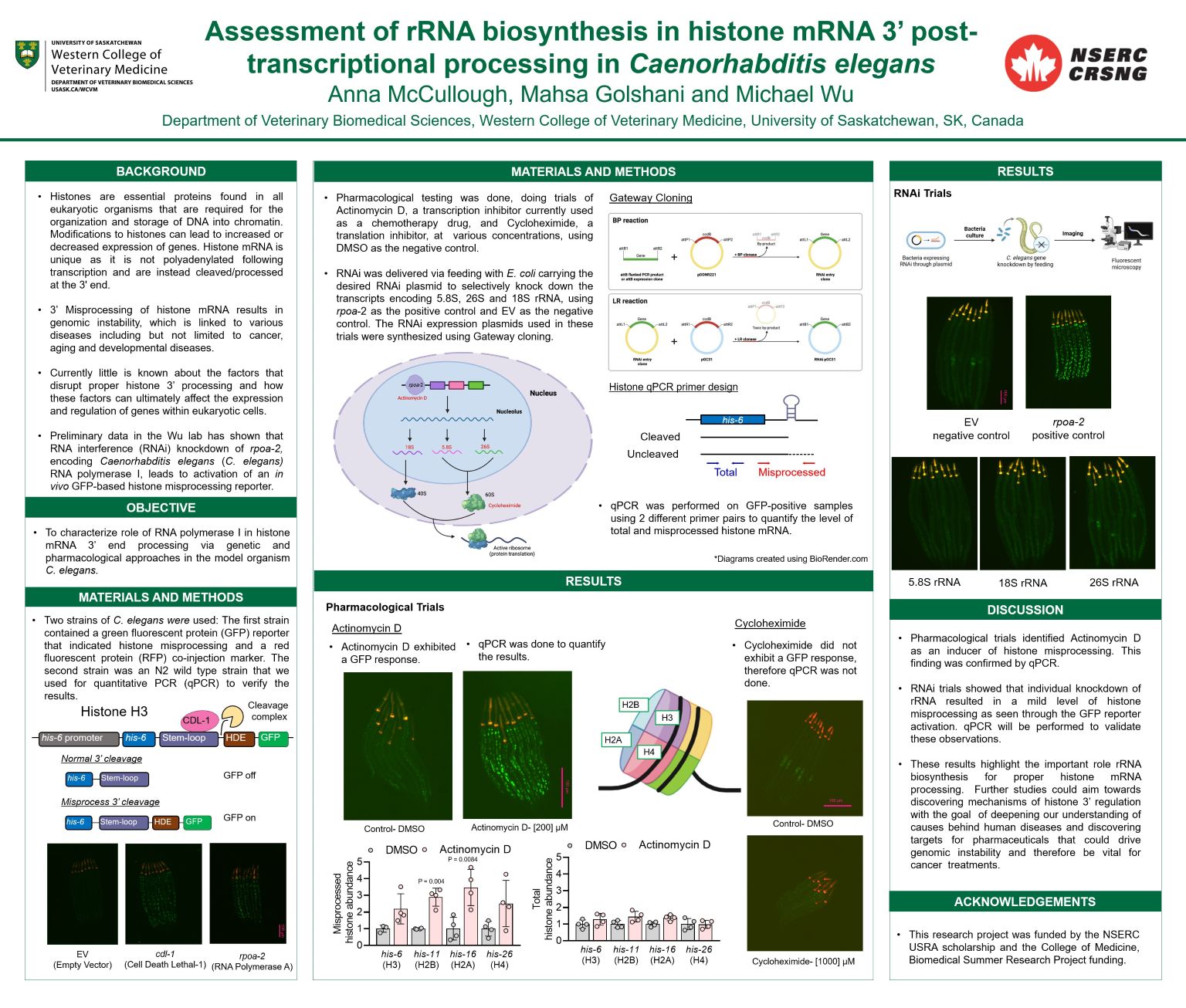
Assessment of rRNA biosynthesis in histone mRNA 3' post-transcriptional processing in Caenorhabditis elegans
Anna McCullough
Histones are proteins within eukaryotic organisms, essential for the proper storage of DNA. Histone mRNA is cleaved at the 3’ end following transcription, a process necessary for genomic stability. Misprocessing of histones can result in genomic instability, which can contribute to diseases such as developmental defects, aging, and cancer. Despite its importance, the molecular requirements for proper histone mRNA processing remain poorly understood. To investigate mechanisms within ribosomal RNA (rRNA) biosynthesis that contribute to misprocessing, we selectively disrupted rRNA processing in Caenorhabditis elegans using a pharmacological approach and RNA interference (RNAi). Varying concentrations of Actinomycin D, a transcription inhibitor, and Cycloheximide, a translation inhibitor, were administered for the pharmacological trials, and transcripts encoding 5.8S, 18S, and 26S were knocked down with RNAi. Trials of Actinomycin D showed strong activation of a GFP based histone misprocessing reporter, and these results were confirmed and quantified by qPCR, indicating the drug induces histone misprocessing. Furthermore, RNAi trials exhibited mild GFP activation, which once verified by qPCR could demonstrate the importance of individual rRNA in creating properly processed histones. These findings demonstrate that ribosomal pathways are a key component in histone processing and genomic stability, which could implicate these sites as potential therapeutic targets.
